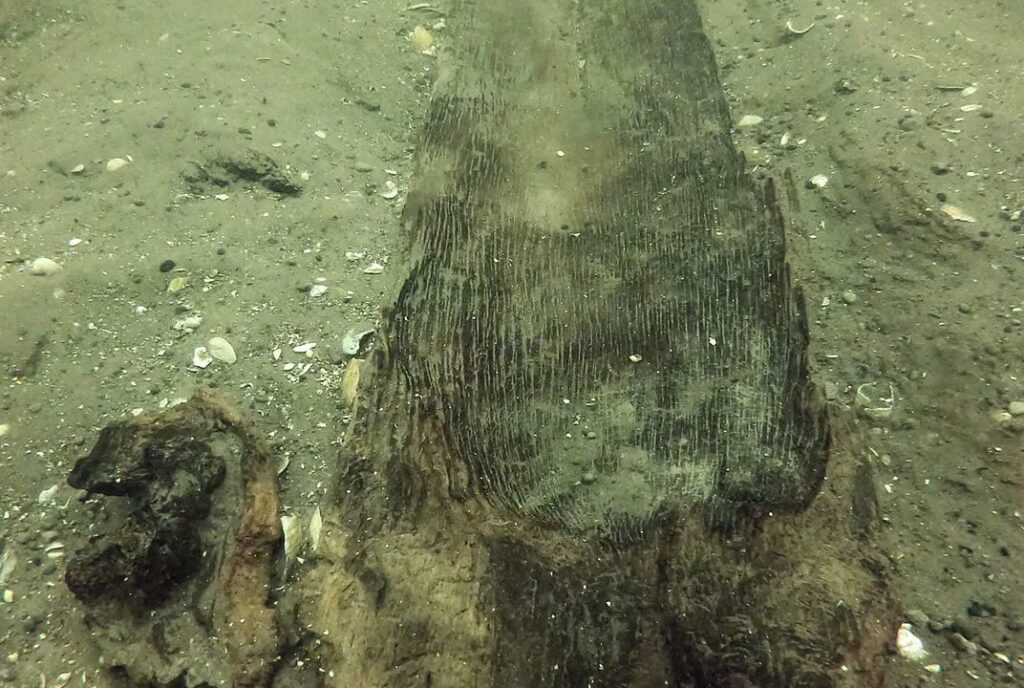Archaeological discoveries often reshape our understanding of the past, and the recent unearthing of 11 ancient canoes beneath Lake Mendota in Wisconsin is no exception. These findings, some dating back an incredible 4,500 years, represent the oldest canoes ever discovered in the Great Lakes region. This groundbreaking research offers a deeper understanding of prehistoric life, innovation, and environmental change.
The Discovery: A Window Into the Past
The excavation project began in 2021 when researchers uncovered a 1,200-year-old canoe. This initial find set the stage for further exploration, leading to the discovery of more canoes, including one dating back 3,000 years in 2022. However, the most significant artifact was unearthed later—a 4,500-year-old elm canoe believed to have been crafted around 2,500 BC.
The canoes were remarkably well-preserved due to the lake’s low-oxygen environment, which slows down the decomposition of organic materials. This preservation offers a unique opportunity to study the technology, craftsmanship, and lifestyles of the region’s early inhabitants.

Historical and Cultural Significance
1. The Role of Canoes in Prehistoric Life
Canoes were indispensable for early communities, serving as vital tools for transportation, trade, and fishing. The discovery of these vessels indicates a sophisticated understanding of woodworking and watercraft construction. Each canoe likely connected communities, facilitating cultural exchange and resource sharing.
2. A Connection to Indigenous Heritage
Lake Mendota, known as “Teejop” by the Ho-Chunk Nation, holds deep ancestral significance. The discovery of these canoes provides an opportunity to honor the traditions and technologies of the Indigenous peoples who thrived in the area for millennia. By uncovering and studying these artifacts, researchers help preserve and celebrate this cultural legacy.

Scientific Insights From Ancient Canoes
1. Craftsmanship and Materials
The canoes reveal the advanced craftsmanship of early humans. The elm canoe, for instance, demonstrates meticulous construction techniques, with evidence suggesting the use of tools to hollow out and shape the vessel. Researchers aim to study the marks left by tools to determine whether they were made of stone, bone, or metal, offering insights into technological evolution.
2. Environmental Clues
Submerged artifacts like these act as time capsules, preserving evidence of ancient environmental conditions. Through sediment analysis and radiocarbon dating, scientists can reconstruct historical climate patterns, water levels, and ecological transformations, shedding light on how prehistoric communities adapted to changing environments.

The Broader Implications of the Discovery
1. Expanding the Historical Narrative
This discovery challenges previously held assumptions about the timeline of human activity and technological development in the Great Lakes region. The presence of canoes from different eras reveals a continuous tradition of watercraft use spanning thousands of years.
2. Inspiring Modern Conservation Efforts
The significance of Lake Mendota as a cultural and ecological site underscores the importance of preserving historical landscapes. The canoes’ discovery serves as a reminder of the delicate balance between human activity and natural environments, inspiring efforts to protect similar sites for future generations.

What’s Next for These Extraordinary Artifacts?
Researchers are now focused on preserving and analyzing the canoes. This involves using advanced techniques such as 3D scanning to digitally reconstruct the vessels and studying the wood’s molecular composition to uncover details about its sourcing and preparation.
In the future, the canoes will likely be displayed in museums, offering the public a chance to connect with this fascinating chapter of history. Collaborative efforts with Indigenous communities aim to ensure that the artifacts are interpreted and presented respectfully, highlighting their cultural significance.
Conclusion: A Legacy Preserved
The discovery of these ancient canoes is more than an archaeological milestone—it is a testament to the resilience, ingenuity, and cultural richness of Wisconsin’s early inhabitants. By unraveling their secrets, researchers bring us closer to understanding the lives of those who navigated the region’s waterways thousands of years ago. These artifacts remind us of the deep connections between humans and their environment, inspiring both awe and respect for the legacies of the past.

